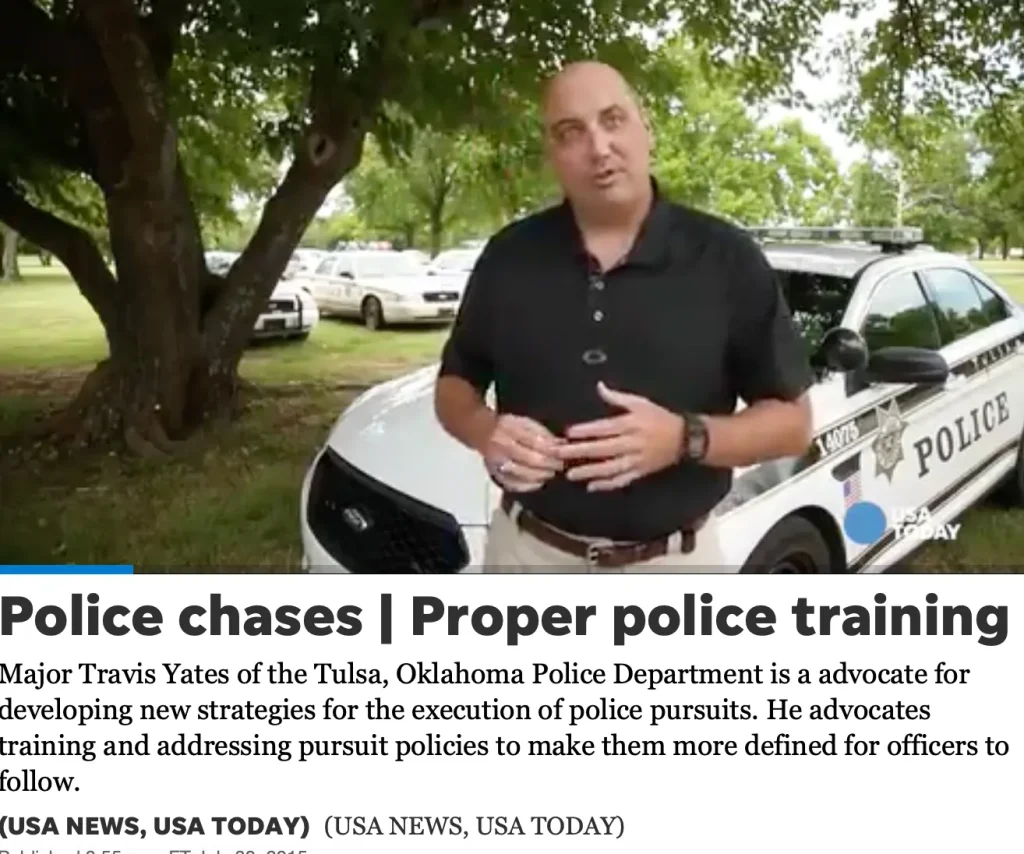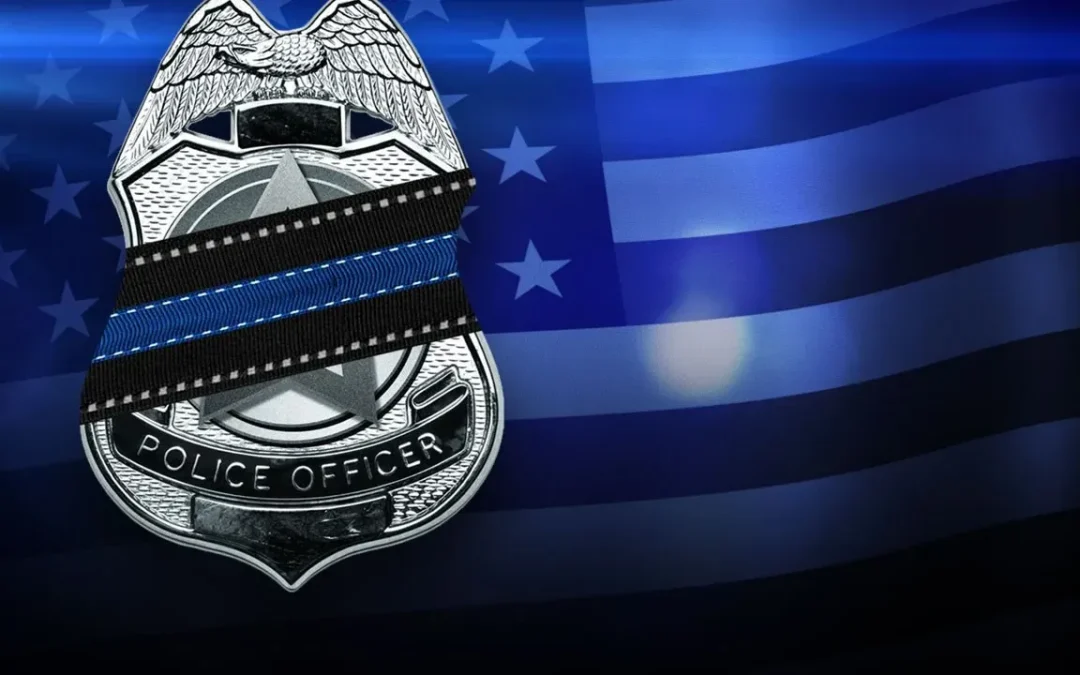For the last two decades, I have studied line of duty deaths very closely and typically pull a decade of tragedy from each individual state prior to teaching there. The Officer Down Memorial Page has, unfortunately been my second devotional of the day. Through that time, I have come to know the founder, Chris Cosgriff, pretty well and I continue to believe that what he started as an idea in college many years ago has been the greatest single contributor to officer safety in our generation.
Prior to ODMP, law enforcement had very little real time information on what was happening to officers and the FBI reports lagged a few years behind. Chris and his team of volunteers have given every law enforcement leader/trainer the ability to adapt quickly as tragedy occurs.
I recently saw a post by Oklahoma Highway Patrol Captain Ronnie Hampton where he broke down the last 50 years of law enforcement line of duty deaths. It was no small feat and I’m grateful he put in the work. I gave a few thoughts on the post and encouraged a lot smarter people to do the same.
I thought I would share my thoughts with you and I encourage you to do the same in the comments.

Killed Line of Duty
1972-1981 2329
1982-1991 1854
1992-2001 1704
2002-2011 1636
2012-2021 1378
We have seen a significant drop in overall line of duty deaths in the last 50 years and as the media loves to point out, that is why law enforcement should not focus on that pesky “warrior” training to survive. They point out that there are many more dangerous jobs such as loggers or roofers (deaths per 100,000) but as usual the media sucks at science. The last I checked, the guy roofing your home isn’t going to be shot and killed. His concern is an “accidental” death so the comparison here is ridiculous.
I am certain that training and equipment, such as ballistic vests, have reduced LODD but the biggest contributor is medical technology. Citing their research, the National Institute of Health says that if we had medical technology from the 1970’s, the homicide rate (and thus, LODD) would be 5x higher. Go back another 40 years and we would be sitting at a 10x rate. A new study taking into account access to paramedics, helicopters, improved trauma centers and trained law enforcement in providing medical would likely increase that number.
The death by assault rate below has been reduced each decade, while at the same time our medical technology has also improved.
Death by Assault
1972-1981 1273
1982-1991 934
1992-2001 706
2002-2011 588
2012-2021 533
A more accurate determination at the dangers law enforcement faces is the assault rate, which often times is nothing more than an “attempted” murder. Unfortunately we do not have an accurate analysis on the overall assaults against LE. The FBI attempts to collect but almost half of represented law enforcement is not reflected because of the lack of agency participation.
The latest data shows around 60,000 officer assaults per year but it is clear that even when agencies participate in reporting the data, it is vastly underreported.
A study by the NIH found that in just a 5 year period, over 300,000 police officers were treated in an emergency room for injuries with the leading cause of assault being violence. Considering that very few officers assaulted actually go to the emergency room combined with half of the officers in the country not represented in the reporting by the FBI, the annual number of assaults is well north of 250,000 per year.
Death by Vehicle
1972-1981 246
1982-1991 201
1992-2001 310
2002-2011 327
2012-2021 231
The increase LODD with vehicles shown in the first 40 years makes some sense. We had very little training/emphasis in this area for the first 20 years of that and we added significantly more cops on the streets in the 90’s from the COPS Grant, etc. Medical technology still plays a role here, which makes the increase quite frightening but then we see a 29% drop in the last decade
That is significant enough to consider that our profession had something to do with that. To be honest, this is personal for me. I spent the first decade of my career pounding the desk (of more than one chief) about the need to train more in this area. The chiefs rarely cared but Police One took notice and I wrote a monthly article on the issue for ten years. I continue to teach a seminar called “Drive To Survive” and in 2011, I co-founded Below 100.

Unlike the assault rate, the vehicle death rate went up for 40 years before going dramatically down and that tells me that when leaders place emphasis, including training, on a specific issue, it matters.
It more than matters…It saves lives.
Leadership Priority
Leading a law enforcement agency is a tough job and there are a ton of demands, requests and downright stupid people saying dumber things than most could imagine. With that said, the number one job of a law enforcement leader is risk management. We know what hurts and kills us. We have been writing those lessons in blood for decades and it doesn’t change.
Cars & Guns
The top two categories, every year are cars and guns. Nothing in the future is going to surprise us so we know exactly what to tackle when it comes to training, equipment, and time.
Unfortunately, we have seen all too often leaders taking their eyes off of these dangers. Nothing is more weaker for some activist to scream about “warrior” training and then see some chief trying to apologize or cut training.
We need to stop apologizing for training our officers for what we hope never happens but when it does, we will be ready. This isn’t baseball where you can succeed 3 out of 10 times and be one of the greatest hitters of all time. As a law enforcement leader, you need to prepare your officers for 100% success when it comes to overall safety and survival and that means a couple of actionable items that need to be addressed immediately.
- Stop the “Check Box” Training. Law enforcement spends a lot of time training in areas that have nothing to do with going home safely. Much of it is political and more of it is just dumb. Cops know this and they don’t respect it. Leaders can keep doing it if they want but they better be giving triple that amount in training on survival.
- Free Does Not Mean Good. If I hear about another agency signing up with another federally sponsored class so the chief can resume build his way to the next larger agency, I’ll have to upgrade my counseling sessions. I’ve been to a lot of this crap training and it’s embarrassing what some leaders think is important.
- Mandate It. If the training helps cops go home at night safely, send everyone to the training and not just those that want to go. The volunteers for safety training are typically the ones that are already well versed in it. Leaders should care enough to have concern about the officers that avoid the training to mandate the training.
- Lead From The Front. Yes, supervisors, commanders and even chiefs need to go to training and not just on the day set aside for the brass. No one respects this and we all know why they do it. If officers see that the training is important to those that sit behind a desk all day, it will be important to them. I can count on one hand how many chiefs have been to my Seconds For Survival course but when they are there, it is noticed and the room is different in a very good way.
- Training Is Not Leisure. Every chief or sheriff has a training budget of some kind and that should not be used for the brass to travel to some brassy conference where everyone tells each other how great they are. Rather than spending $10,000 on a week long vacation for a few high ranking friends, bring a trainer to the agency for a few days and send a lot of street cops to the training or send a trainer to a ‘train the trainer’ course and have them come back and train everyone. Personally, I cut my speaking fee significantly for multiple days in one location and others likely do as well.
- Trust The Trainers. Regardless of the topic, most agencies have someone that has made it their mission to be an expert in the area. The problem is that most of them haven’t sewed on stripes or obtained some higher rank that gives them a seat at the boring table. If a leader wants to provide their officers with the safest environment possible, empower those that are dedicated in doing just that.
Final Thought
The law enforcement profession is not unlike all other professions.
We have wolves among sheep.
There are a ton of so called non-profit organizations that ask for money but when you look at their public IRS filings, you wonder how much of that money is actually going to a cause and not making directors and board members Rich Men North of Richmond. Chris and the ODMP are all volunteers and any money that supports their organization helps directly with what they are doing. There are no salaries, no paid lobbyists, and definitely no love making with the DOJ. I can’t recommend supporting them enough.
Dr. Travis Yates retired as a commander with a large municipal police department after 30 years of service. He is the author of “The Courageous Police Leader: A Survival Guide for Combating Cowards, Chaos & Lies.” His risk management and leadership seminars have been taught to thousands of professionals across the world. He is a graduate of the FBI National Academy with a Doctorate Degree in Strategic Leadership and the CEO of the Courageous Police Leadership Alliance.

